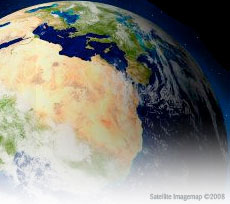Value Replacement
The different input data sets represent water regions with
different numerical values. GTOPO30, for example, uses the value
-9999 to represent water bodies while SRTM uses -32768. For the
sakes of consistency, all water regions were replaced with the
number 0. This standard also facilitates the viewing of the DEMs
in certain programs.
Data Shifting
The input Alaska DEM is referenced to the NAD27 horizontal
datum. As a result, the orginal Alaska DEM is shifted compared
to SRTM. In order to provide a smooth transition between
different DEM data sets, the output Alaska DEM has been shifted
to correlate with SRTM.
|





